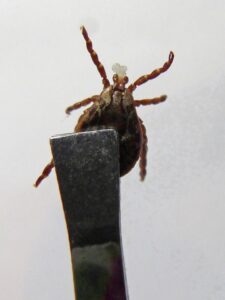Our animals are just as likely to suffer from dental problems as we are, and in some cases, they may be so severe that a tooth extraction is the best course of action. Tooth extraction is not something that is performed lightly in any scenario. Nevertheless, if your feline is suffering from moderate to severe periodontal problems or a condition known as feline tooth resorption, our veterinary dentist may decide that an extraction is the best course of action to prevent the issues from worsening.
Why Is Tooth Extraction Necessary If My Kitty Has Periodontal Disease?
Feline periodontal disease is just like any other version of the condition, which is characterized by the inflammation and subsequent infection of the gums. Peridontal disease, also referred to as dental disease, periodontitis and gum disease, is extremely common in cats, with as many as 70% of felines developing some degree of the condition by the time they reach 3 years old.
Periodontal disease occurs when plaque, which is the invisible, bacteria-laden film that forms on the surface of your kitty’s teeth, penetrates below the gum line. This causes swelling, soreness and bleeding. Eventually, infection occurs that can then spread to the jaw bone and into the blood stream where it will damage her major organs.
Since periodontal disease cannot be reversed, it is essential that you do everything you can to help prevent it, such as brushing your cat’s teeth regularly. If a tooth is badly affected by periodontal disease the tooth root will be compromised and it will die and require extraction.
Why Is Tooth Extraction Necessary If My Cat Has Feline Tooth Resorption?
Feline tooth resorption is a very common and painful condition that has been shown to affect as many as 50% of cats at some point during their lifetime. However, since many owners are unaware of the condition and do not recognize the symptoms, many felines do not get the prompt treatment that they need.
Feline resorption occurs when your cat’s body starts to break down and reabsorb the structures that form the tooth, beginning with the enamel along the gum line and continuing to affect the whole tooth until there is just a small bump remaining on the gums. Since once of the first signs of tooth resorption is the development of what looks like a cavity, it is often overlooked. However, since cavities in felines are incredibly rare, anything that looks like a cavity is almost certainly a sign of tooth resorption.
Cats are particularly good at hiding any vulnerabilities, including if they are in any dental pain. However, some symptoms to look out for include:
– Difficulty eating / dropping food
– Loss of appetite
– Weight loss
– Bleeding along the gum line
– Unusual behavior
The good news is that almost all cats make a speedy and perfect recovery from their extraction procedure and provided they have only lost one or two teeth, you kitty should still have full function of her mouth.
It can be very difficult for even the most conscientious owner to identify that their cat is suffering from dental problems. For this reason, regular check-ups with our veterinarian are important, as they can spot potential issues early and arrange for the necessary prevention or treatment to stop your cat from suffering.
If you have more questions about reasons for feline extractions, or if you would like to arrange a dental check-up appointment for your cat, our team would be happy to assist you. Please contact our clinic today.



